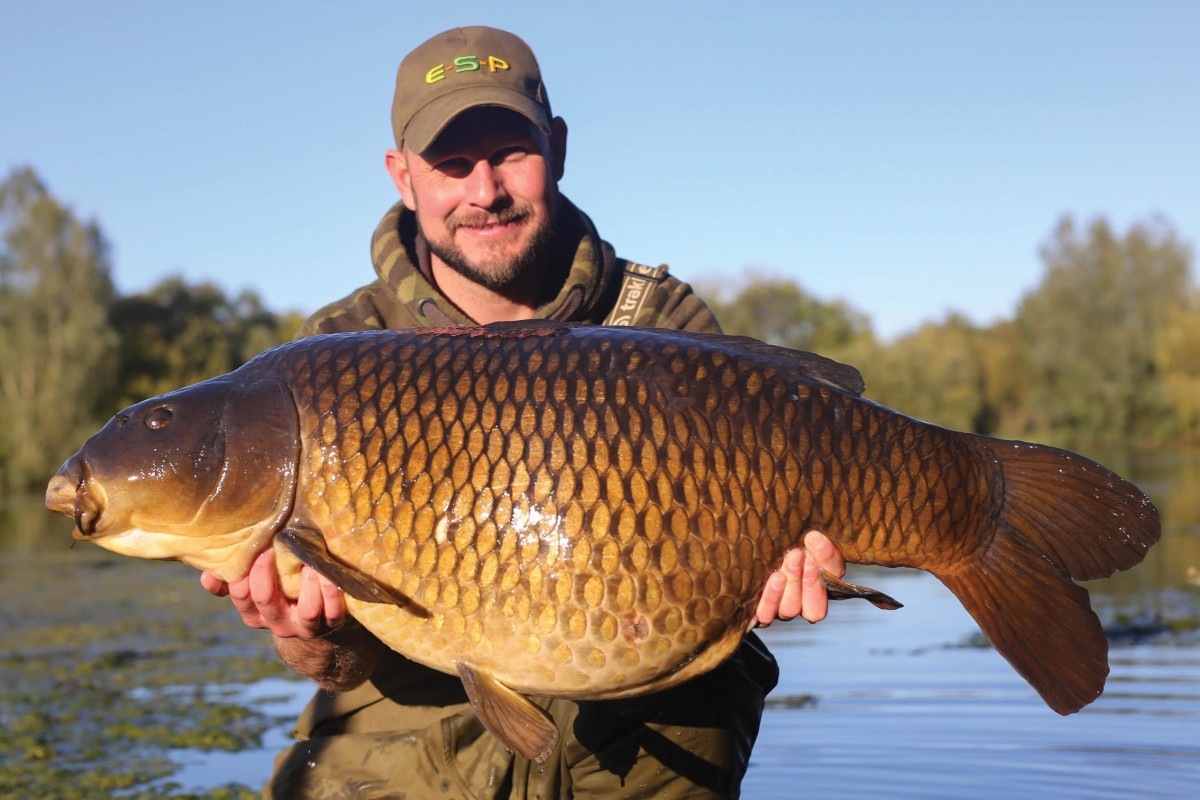
Three on a spot
It’s nothing new, but it’s a tactic which, when used correctly, can bring substantial reward. Kev Hewitt explains…
In 2010, at the end of the season on Linch Hill’s Christchurch, my good friend Alexei said to me, “Imagine how many you would’ve caught if you’d slack-lined and fished three different spots all year!” After ending up top rod with over 50 fish from the tricky Oxfordshire venue, I responded simply with, “Imagine how many bites everyone else has missed out on by slack-lining and not fishing three on a spot…” Just take a moment to think about that exchange, and make up your own mind.
Fishing three on a spot has been a trademark of mine, ever since I started carp angling way back in the late-1990s. Under the wings of the Bartlett family, I was introduced to fishing for the species, and from a young age, I really enjoyed spodding. Back then, there were no YouTube videos to watch, and no social media to learn tactics from. We had to think for ourselves and use trial and error… aspects of our sport that the modern angler sadly misses out on.
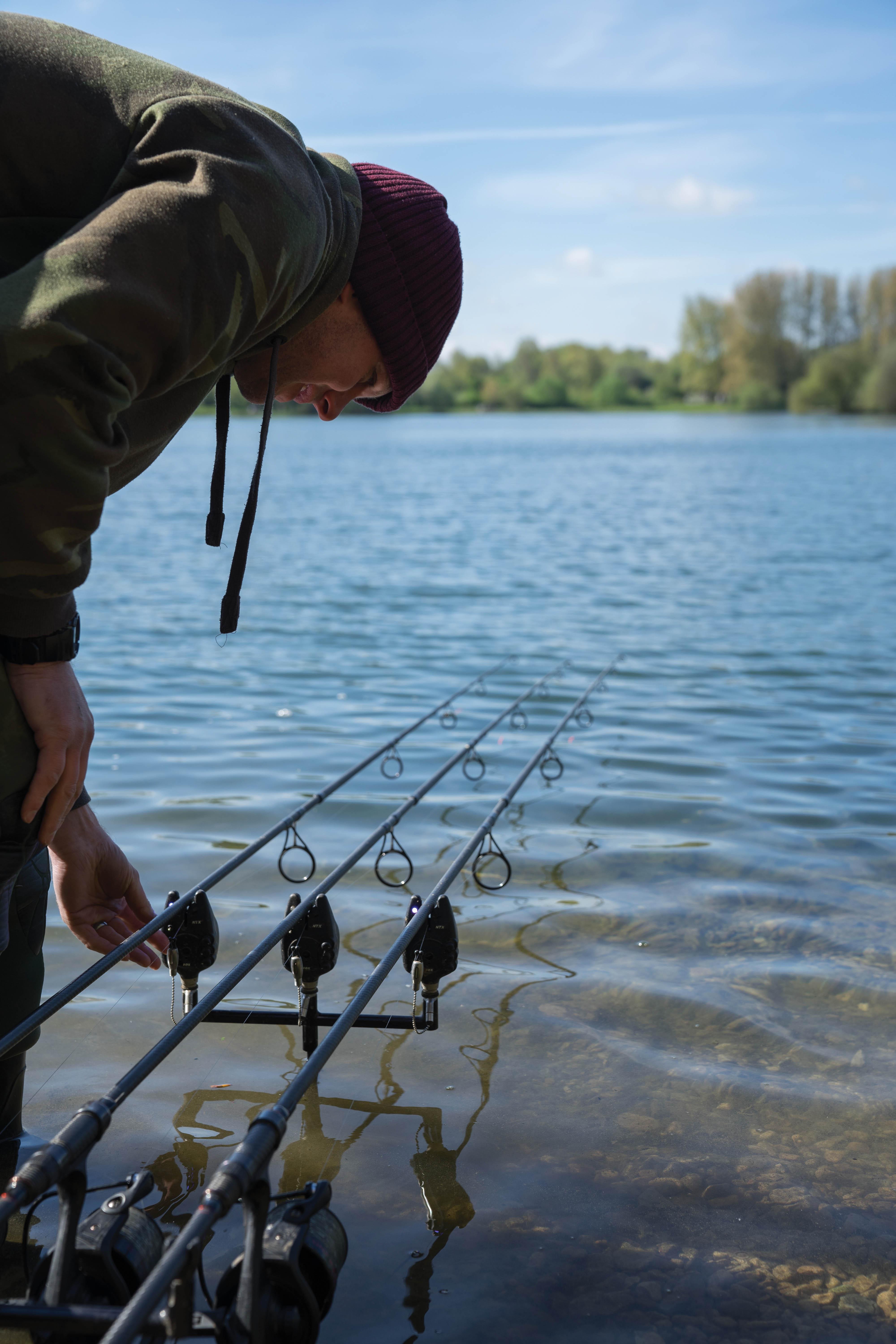
As a kid, it didn’t take me long to realise the potential of fishing three on a spot and baiting accurately over the top. I enjoyed using the tactic so much, that I used to cycle four miles to the lake after school, just to practise spodding water in an effort to hone my skills of fishing at distance and casting accurately.
Mark Bartlett and I used to fish a 50-acre reservoir in Chard, popping up a marker float up at distance. I would fish two rods to the left, and Bart, two to the right. We would then spod in tandem to the marker float, and each and every cast was a competition to see who could get their Pocket Rocket closest.
Our successes around 20 years ago, paved the way for how we still fish today, and laid the foundations for some fabulous achievements, including being crowned back-to-back British Champions in 2016 and 2017. We tested our tactic on venues like Horseshoe, and Linear Fisheries’ Manor Farm and St. Johns, and we caught huge numbers of carp along the way.
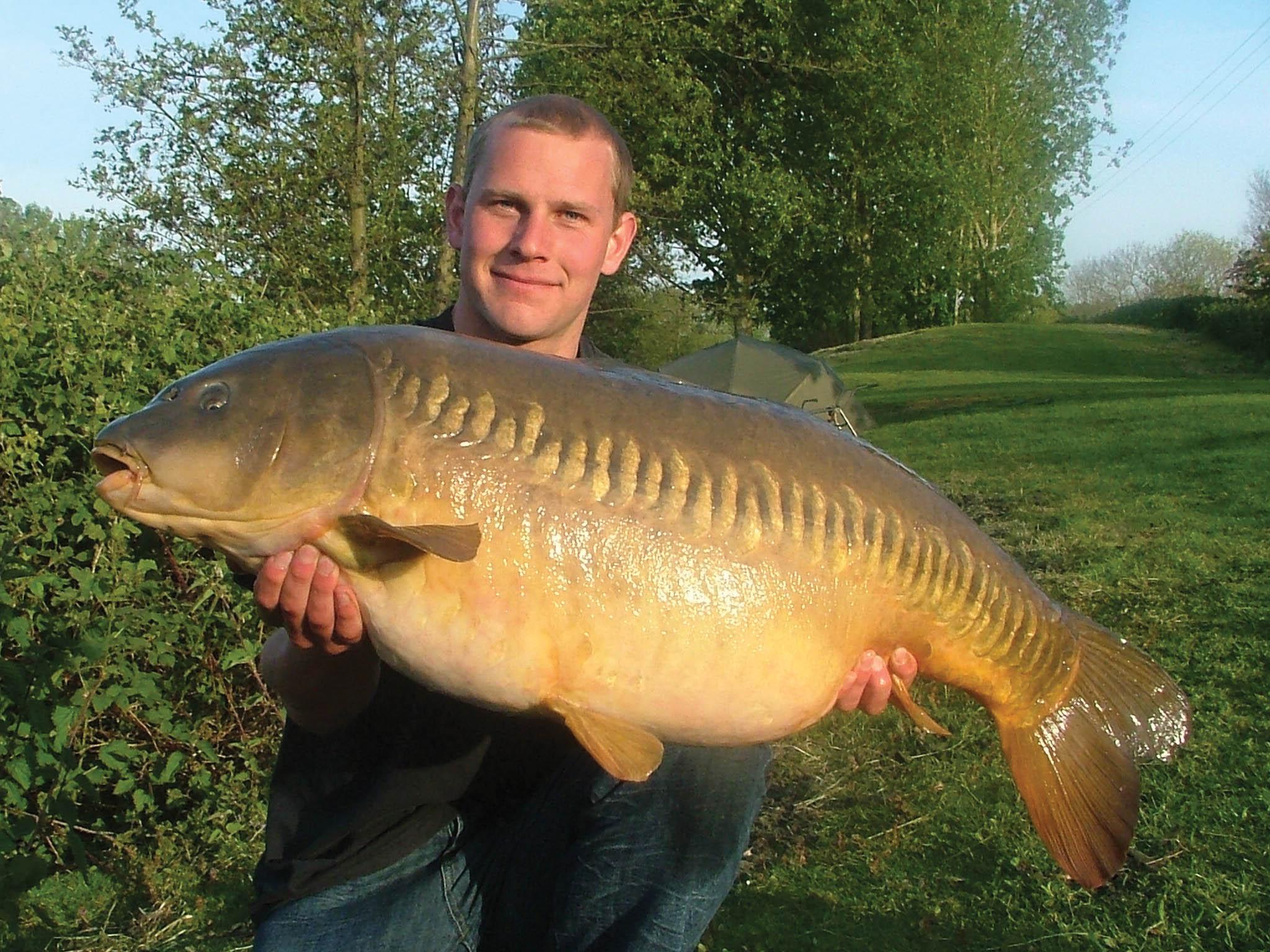
Having attended university, I am fairly academically minded, and carp fishing to me, is literally a big science experiment. Over a 20-year period, I have tested my theories to their extremes and have pushed the tactic to its limits. I’ve proved and disproved theories by experimenting, have tweaked and changed my approach, and have monitored results, all whilst trying to stay ahead in the game. By being one step in front of everyone else, I’ve ensured that carp end up in my net more consistently than those of fellow anglers. Don’t get me wrong; I have learned a lot from others, but instead of copying them, I will look at what they’re doing and then put my own spin on things, should I feel that my angling might benefit.
By process of trial and error over 20 years, I have proved beyond reasonable doubt, the effectiveness of my approach. I’m now able to fish with total confidence, and this allows me to concentrate on my watercraft. My tactics are finely tuned, and I know that if I get my watercraft right, the results will follow.
My big science experiment this year, was sussing out Farriers, a lovely syndicate run in the picturesque Cotswold Water Park and run by the Carp Society. Rules on the lake permit the use of two rods only, for the majority of the year, and pretty much everyone I saw split theirs over two different spots. I decided to stick with my two-on-a-spot tactic. I had a year beyond belief, with over 90 bites from a venue that contains around 120 fish. As I tweaked my approach through the year, a number of changes brought more, and quicker bites. My visits culminated in a perfect autumn, when I landed 15 forties during 14 nights’ angling, including all of the fish in the lake over 45lb.
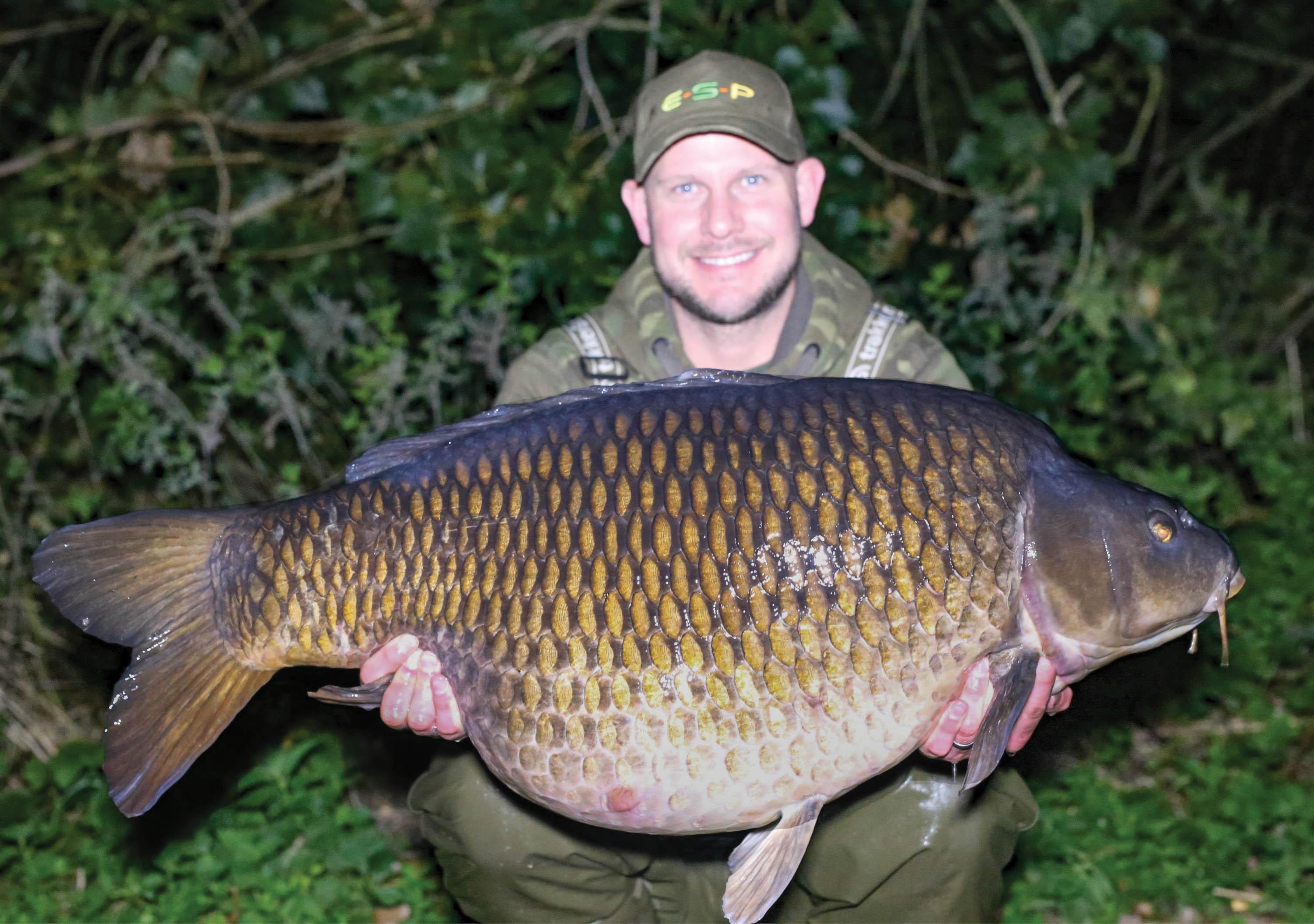
Farriers is unlike most venues I’ve fished, in that, at an average of around four feet, it’s much shallower than the gravel pits I’d been used to fishing, most of which were around twelve feet. One of the first lessons I learned, was that when it comes to baiting up in shallow water, less is more. Looking back, it makes total sense to fish to a nice compact, densely baited spot, a contrast to my approach in deeper water as I’ll explain. When fishing depths of ten feet-plus, no matter how accurately you spod, the bait will naturally spread as it falls through the water. The deeper the water, the wider the spread of bait, so you need to put more in to achieve a dense bed of feed on the bottom. Flipping that on its head and looking at shallow water where the spread of bait as it falls through the water is reduced, you can achieve a much tighter patch with a lot less feed. I also believe that carp are far more wary about feeding over big beds of bait in shallow water - you wouldn’t put five kilos of bait in the edge in three foot of gin-clear water would you!
My baiting strategy played a huge part in my success this year. I learned that initially, I’d need to get the fish feeding by introducing around a dozen Spombs of bait. Once I had my first bite, then around eight more Spombs’ worth were needed to encourage them to return. I believe that by the time I’d had my second bite, the carp knew that the bait was there and would continue to return regularly to investigate. After my second bite, I would then feed just four or five Spombs of bait, and that was enough to induce continued interest. Once I had the fish going, I figured that just two or three Spombs of bait were the perfect amount to bring on the quickest possible follow-up bite.
Obviously I experimented during the year with quantities, and I can say with near certainty, that the above was the right approach. If I put too much bait in, I’d not get a bite for ages… it was massively counterproductive. It really was the polar opposite of what I’ve found to be the case on the deeper lakes I’ve fished for most of my life, where introducing bait in quantities has been effective. If I had adopted my Farriers tactic on other venues, I’m sure I would have struggled big time, and vice versa.
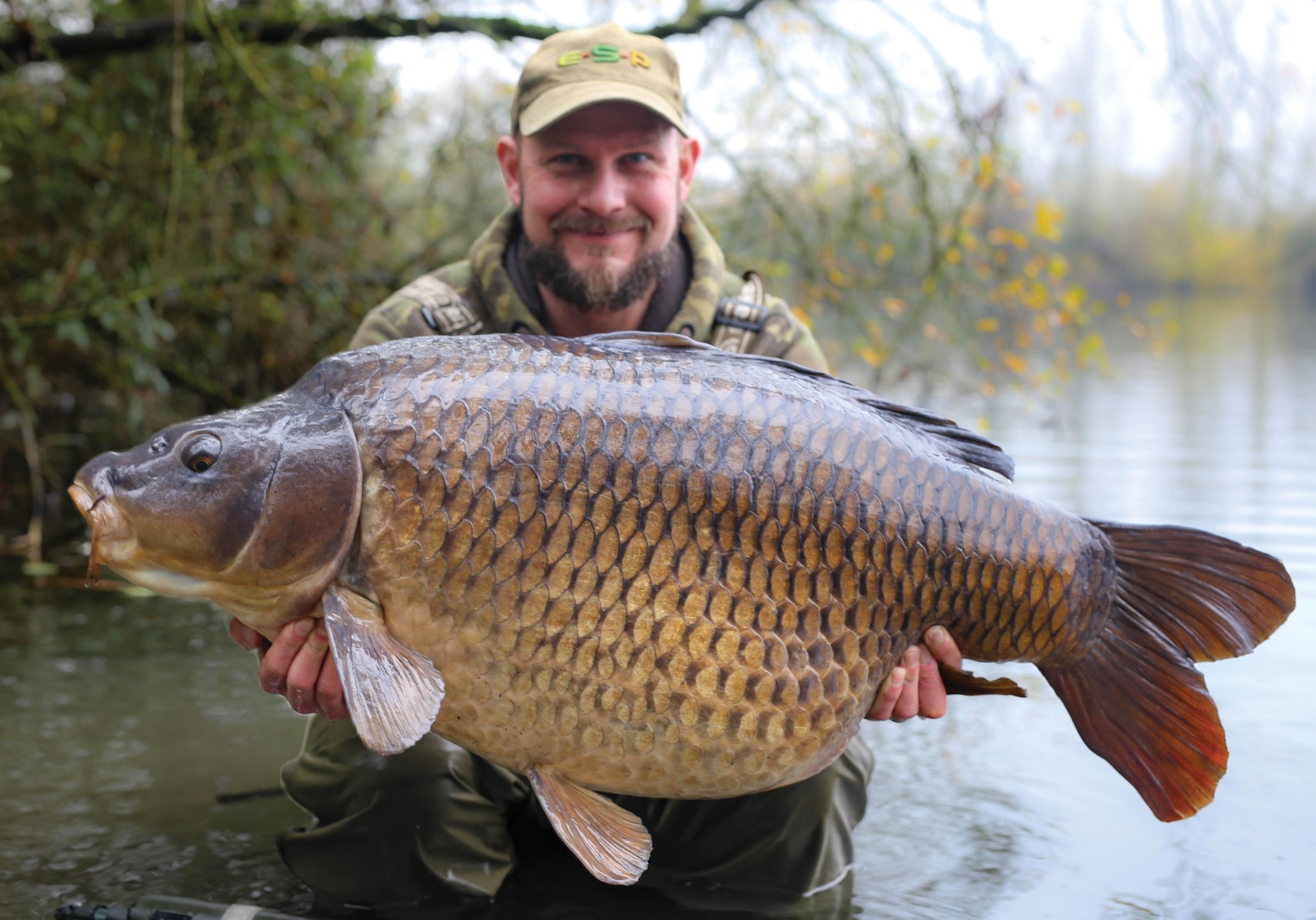
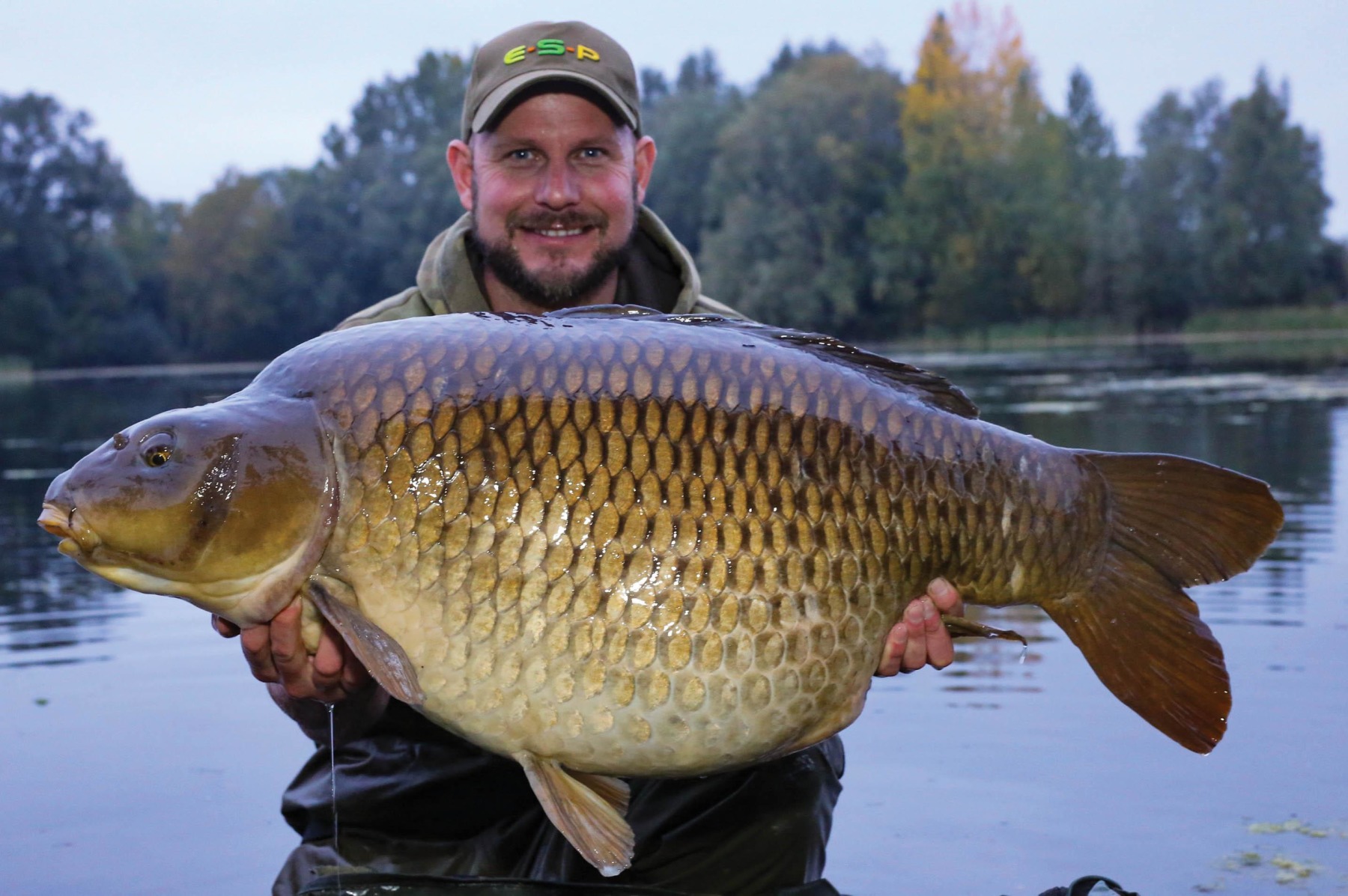
At this point, it’s worth mentioning the importance of accuracy, especially when putting less bait in. As mentioned, I always try to achieve as dense a baited area as possible, and that comes from getting every Spomb down the same hole. If I were to top up with just five Spombs, and one or two landed short or to the side of the spot, then chances of a bite would diminish dramatically. With every Spomb cast accurately over the top of all three rods, however, the feeding carp will never be more than a couple of feet away from a rig… the bigger the spread of bait, the less likely they are to feed in the first place, and the further away from the rigs they’ll be.
Picture the ideal scenario of three rods on the spot, all a foot or so apart, over an accurately baited area with every Spomb having hit the clip and the majority of feed landing over the top of the middle rod. If the bait is in the right spot and it’s something the carp want to eat, they will drop down and feed. If a couple of fish drop down, they will start competing for food. Again, as mentioned, they won’t be feeding any more than a foot or two away from a rig. If a carp susses a rig, or picks it up and spits it out, it will swim only another foot or so before it comes across another. Let’s assume that the fish also manages to avoid the second rig… a foot further and it’s surely not going to get away with three rigs in row! You get the bite, top up with a little more bait, more fish move in and you get another bite and top up. The fish are returning to the spot on a regular basis to find that it’s been topped up and the session is builds nicely.
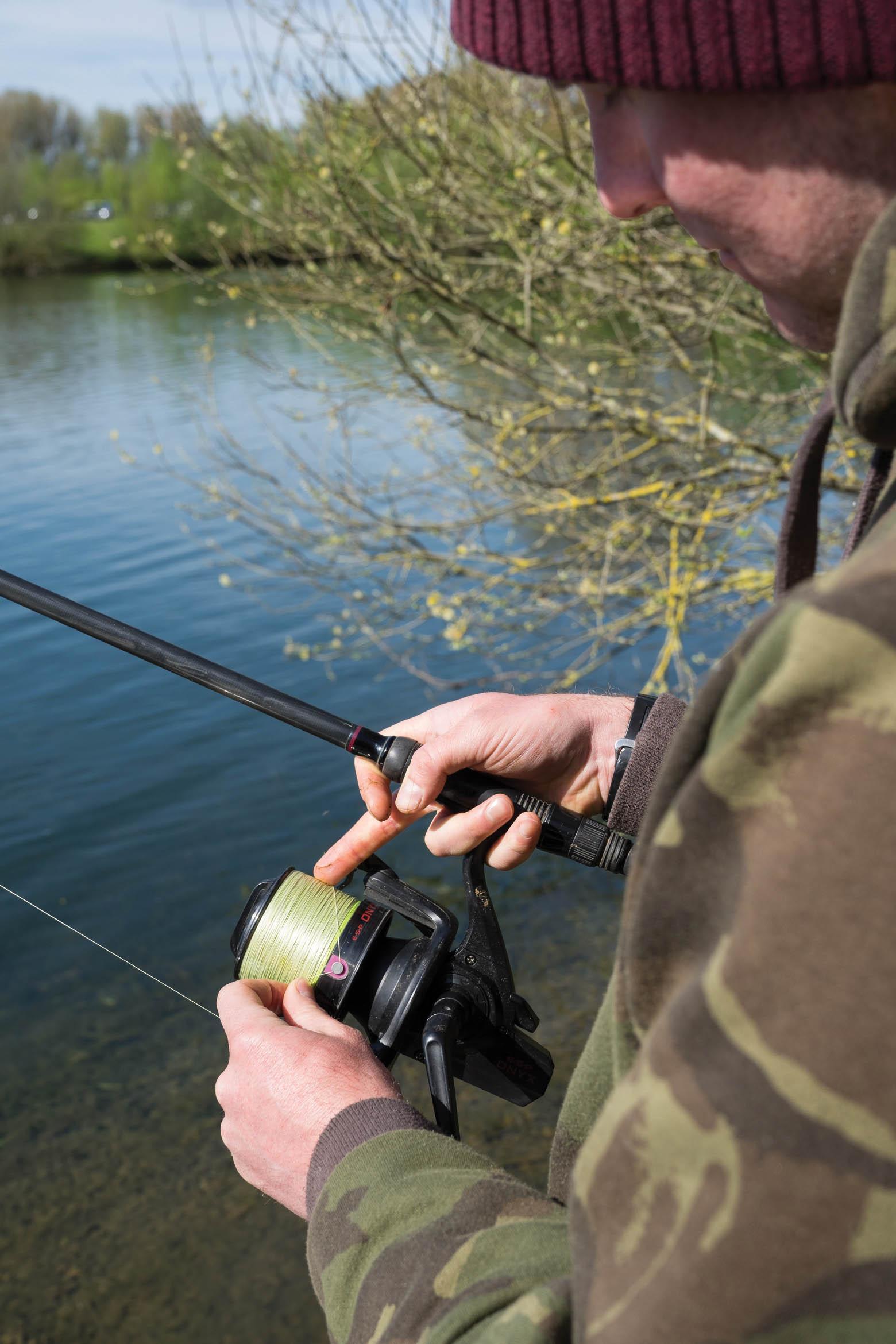
Again, we’ll flip this scenario on its head. I am fishing the same spot, but have only one rod on on it. Unfortunately, the rig has tangled in flight, it’s kicked up a little on some debris on the bottom, or a carp has simply sussed it. A carp is feeding on the spot, but I am not going to get that first bite. The carp cleans the spot, there’s no bait left and it isn’t topped up because I haven’t had a bite. Any carp in the area disperse, because there’s nothing to keep them in the area. The spot fizzles out, nothing happens and I suffer a blank!
Finding The Perfect Spot
There’s a lot to consider when choosing the perfect spot, of course… it has to be right if you’re going to put all your eggs in one basket! For me, knowledge is acquired from fishing the lake and getting in-tune with my quarry. Learn where the fish like to hang out and where they want to feed, and trust me when I say that these are not always the same areas. Careful plumbing with braided line and a marker rod will tell me where I believe the fish have been feeding, or where they are likely to feed. The cleanest, hardest and most polished spots are the best, not the edge of a spot where it’s more silty and there’s more debris - despite what you might read. Think about it; the polished spots are clean because they are fed on more regularly. The edge of the spots are just that, as they aren’t fed on as much… you wouldn’t put your food on a dirty table when there’s a clean dinner plate in the middle of the table would you!
So the spot has been found and I have located its boundaries with the marker rod. I know how big the spot is, how far left I can put a rig, and how far right (some spots are bigger than others, obviously). Once I have found the best, hardest and cleanest spot, I will clip up my rods by using marker sticks. I line up with a far-bank marker and cast my middle rod at the marker. I then follow up with a rig either side. Remember, the deeper the water, the further the bait spreads, so in that situation there’s no need to fish the rigs too tightly together - as long as the clear spot is big enough, it’s perfectly viable to fish the rods a few feet apart. The shallower the lake, however, and the smaller the spot, the closer together your rigs need to be.
Once the three rigs are on the deck, I tighten the lines right up, being careful, however, not to move the leads. I then clip on the bobbins, before I let the lines tighten up so that each is pointing directly at its rig. I put all three tips together and look at the angles of the line, ensuring they’re not crossed. On occasion, the lines might merge. The rigs will then have landed bang on top of each other, and if this happens, I will always re-cast one - otherwise you can end up in a right pickle! Putting the tips together on a tight line is also a fantastic way of checking whether your rigs are on the money after a re-cast during the night. If you don’t check and your lines have crossed, then you’ll be in serious trouble if, or when you get another bite.
My one last tip, is to take a spare net. When you get the tactic right, double-takes are a distinct possibility, even on less densely stocked waters. Carp will compete for food on a spot, and getting them to compete with each other will make them so much easier to catch, so fish well, and be prepared!
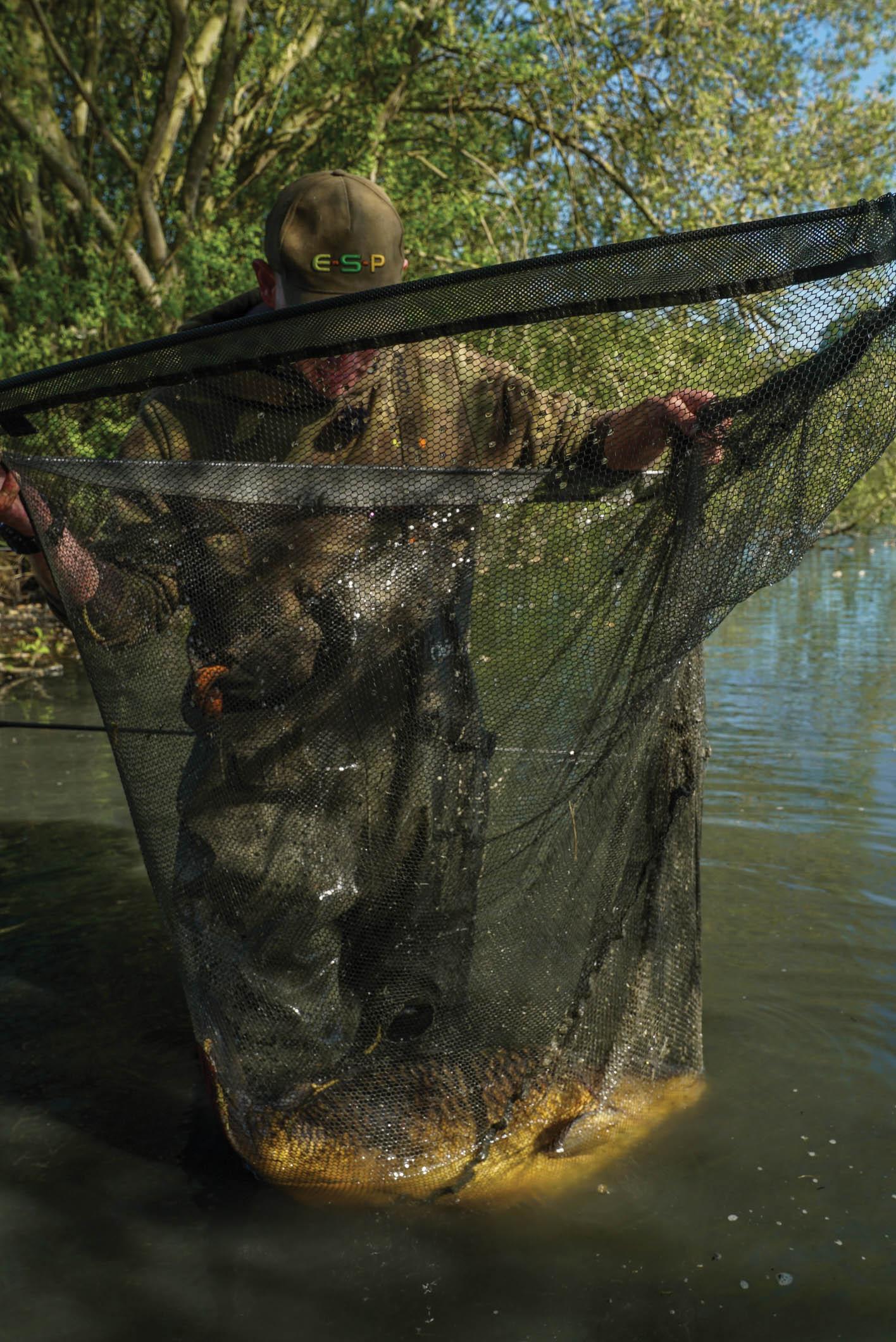
The new OlogyFix Vol.2: The Pros Rigs and Bait Mixes is on-sale NOW! 𝗕𝘂𝘆 𝗛𝗲𝗿𝗲 ➡️https://bit.ly/3gW2on5



